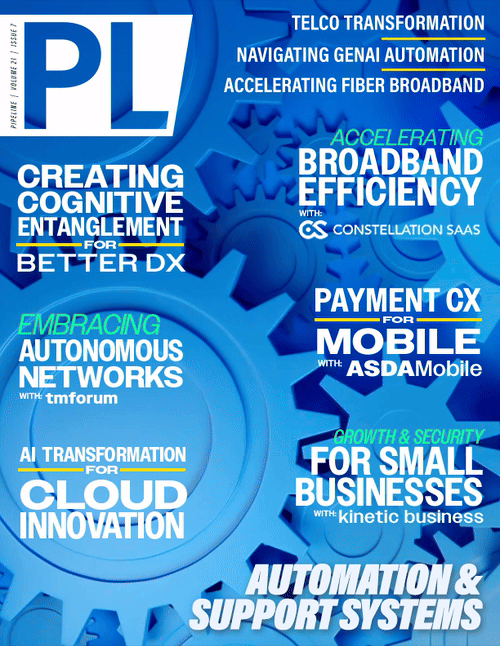How to Seamlessly Manage
Broadband Rollouts
By: Stefanie Siegle

As communities worldwide continue to prioritize broadband expansion, service providers are under immense pressure to deploy networks efficiently while optimizing resources and ensuring long-term scalability. The increasing demand for high-speed internet, driven by digital transformation and government-backed initiatives, has made broadband rollouts more complex than ever.
Broadband expansion projects involve multiple stakeholders, evolving regulations, and intricate network infrastructures, therefore managing these deployments effectively requires a strategic approach. Robust infrastructure management software plays a crucial role in streamlining processes, reducing costs, and ensuring seamless network performance.
Benefits of Fiber-Optic Broadband
Fiber-optic broadband offers a significant advantage over traditional copper-based networks by delivering higher speeds, lower latency, and greater reliability. Unlike legacy infrastructure, which is prone to signal degradation over long distances, fiber-optic cables use light to transmit data, ensuring consistent performance and minimal loss. This makes fiber an ideal choice for high-bandwidth applications such as video streaming, remote work, telemedicine, and smart city deployments.
Additionally, fiber networks are more energy-efficient, require less maintenance, and have a longer lifespan, making them a future-proof investment for service providers looking to meet growing consumer and enterprise demands. As digital transformation accelerates across industries, fiber-optic broadband remains essential for enabling innovation, economic growth, and seamless connectivity.
The Challenges of Broadband Rollouts
While fiber-optic broadband is a preferred choice for modern network infrastructure, these deployments come with their own set of challenges, including:
Resource Optimization: Efficiently utilizing labor, equipment, and materials is critical to keeping projects on track and within budget. With the increasing costs of infrastructure development, providers must ensure that resources are allocated strategically to avoid waste and inefficiencies. This includes balancing supply chain logistics, coordinating with subcontractors, and minimizing unnecessary expenditures.
Scalability: Networks must be built with future growth in mind, requiring a flexible approach to infrastructure planning. As broadband demands increase, providers must ensure that their networks can handle higher data loads, support new technologies, and expand into new service areas without requiring costly overhauls. Without proper planning, networks may quickly become outdated, requiring additional investments to remain competitive.
Regulatory Compliance: Navigating local regulations, securing permit approvals, and addressing environmental considerations can create significant roadblocks to broadband expansion. Each jurisdiction may have its own set of permitting processes and infrastructure guidelines, which can slow down deployments and increase administrative overhead. Additionally, regulatory changes or new policies can introduce unforeseen delays and expenses.
End-to-End Visibility: A comprehensive, real-time view of the network during rollout is crucial for a successful fiber deployment. Without full visibility into network components and infrastructure status, providers risk inefficiencies, delays, and costly errors. The lack of integration between different management tools further exacerbates these challenges, leading to data gaps, misalignment across teams, and difficulty in troubleshooting. Inadequate visibility during deployment can have long-term consequences, affecting both the build and operations phases. By ensuring end-to-end visibility from the outset, providers can minimize risks, reduce costs, and improve network reliability throughout its lifecycle.
Interoperability: Integrating new broadband infrastructure with existing legacy systems and emerging technologies presents significant technical challenges. Many service providers manage a complex mix of outdated and modern equipment, making seamless communication and compatibility difficult to achieve. Without robust interoperability solutions, providers risk higher maintenance costs, deployment delays, and performance bottlenecks. Additionally, retrofitting interoperability after deployment is far more challenging and costly than incorporating it from the outset. Prioritizing interoperability from the beginning ensures smoother integration, reduces long-term expenses, and enhances network efficiency.
Geographical and Environmental Barriers: Broadband rollouts must navigate a wide range of geographical and environmental challenges. In urban areas, deployments are often hindered by road closures, underground construction, and traffic disruptions, making installation complex and time-consuming. In contrast, rural and remote locations present obstacles such as rugged terrain, sparse existing infrastructure, and limited accessibility. However, the most significant challenge in these areas is managing the vast distances required to ensure a reliable network post-deployment. Overcoming these barriers requires strategic planning, advanced deployment techniques, and tailored solutions to maintain network performance and efficiency across diverse environments.
How Management Software Streamlines Broadband Deployment
To overcome these challenges, service providers require advanced management software that serves as a single source of truth for network assets, infrastructure planning, and project execution. Breaking down data silos and consolidating information into a unified platform is essential for ensuring network quality, reliability,




















